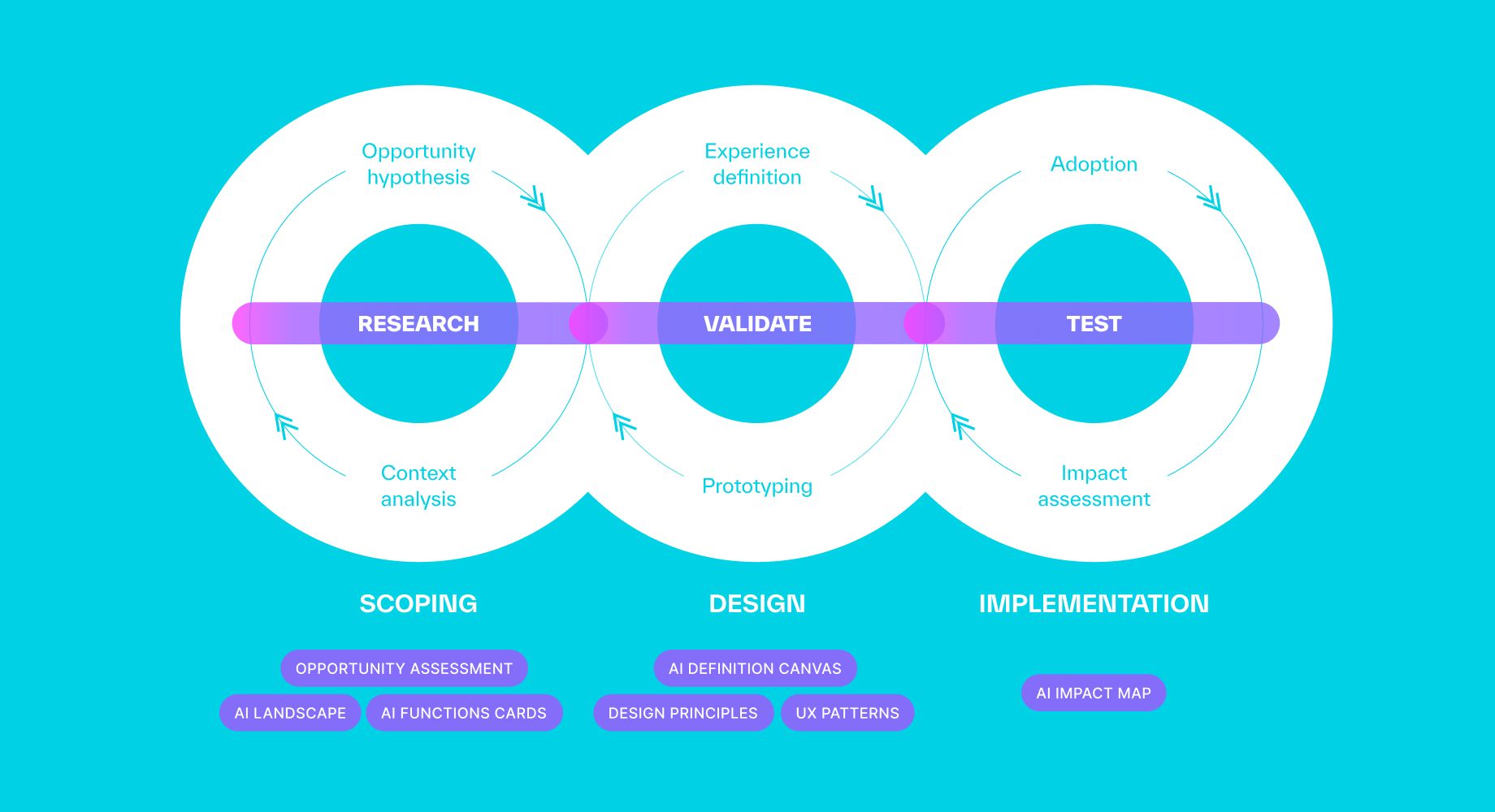main steps
01
Identify the opportunities
The first phase is crucial for mapping the existing situation of the service, understanding its painpoints and bottlenecks and whether AI can be a viable solution for them to consider. Use the AI Landscape canvas and AI Functionalities cards deck to explore the variety of possibilities spanning from the automation of some processes to assistance to workers and users, and eventually augmentation of their capabilities and enhancement of service.
These tools are aimed at generating multiple ideas of intervention, which then can be filtered thinking of the solutions’ potential impact and the effort required for its implementation.
tips
Involve roles with knowledge of both front and back end processes and issues (operational managers, etc), technical figures would be very beneficial.
Read more on what AI can do for services.
02
02
Prioritize the concepts
Define the details of your concepts to better understand what value can they bring. Consult the tech team/advisors as well as stakeholders, or their representatives, to evaluate the feasibility and impact of your ideas. Based on the effort and impact assessment, evaluate the overall potential of the hypotheses and optional action items to improve them. Compare initial concepts to select the most promising ones with which to proceed.
tips
Conduct research with operators, users and stakeholders to be sure about the effort and impact assessment’s correctness.
03
03
Define the experience
Once the AI intervention concept was evaluated and chosen to proceed with, it needs to be designed and prototyped in detail.
To start with this step, AI Design principles can be used: review them and choose which are the most applicable to the service being designed. By selecting the most pertinent principles, we can decide experience pillars that will shape the future service. After that, a detailed design can proceed with definition of variables of relational and interaction dynamics that can distinguish one experience from another. For this we are working on an AI experience definition canvas, but so far the information about these elements can be found in additional resources.
tips
Read about the AI design principles and interaction and relational variables.
04
04
Assess the impacts
Though often excluded from the realm of design, this step becomes more and more crucial with complex systems adoption and understanding of intervention impacts that can benefit a lot from involvement of designers. Besides the established practices like service guidelines and others to help on the operational level, new frameworks to set up the impact intents and measuring protocols are needed. We are developing the AI Impact Map to help with this phase.
tips
Set up the impact assessment protocol as early as possible in design process to start gathering the metrics already during design and development phases.
